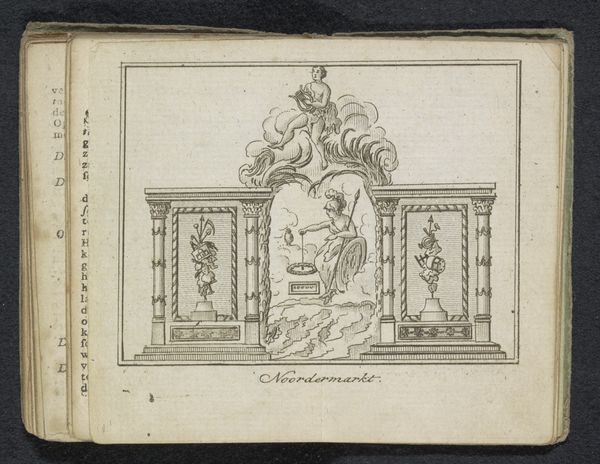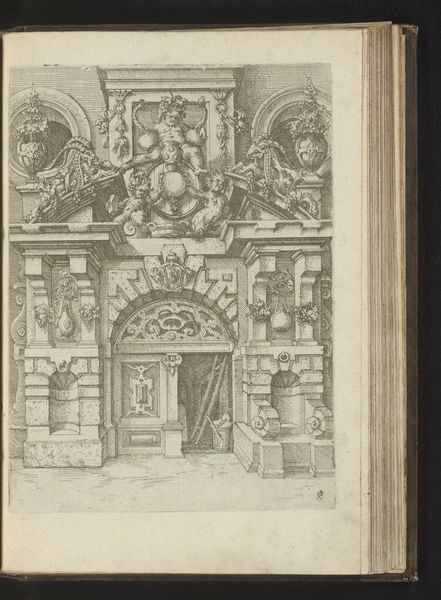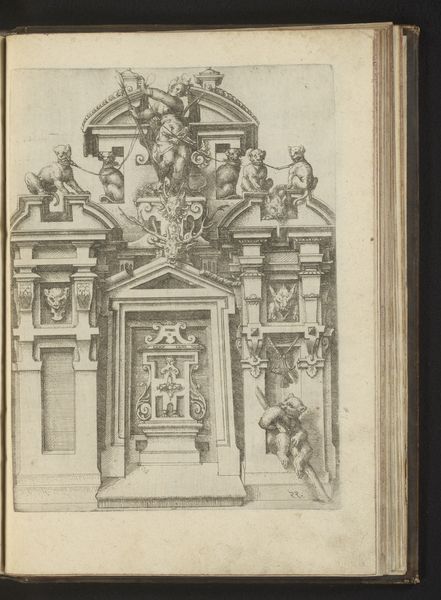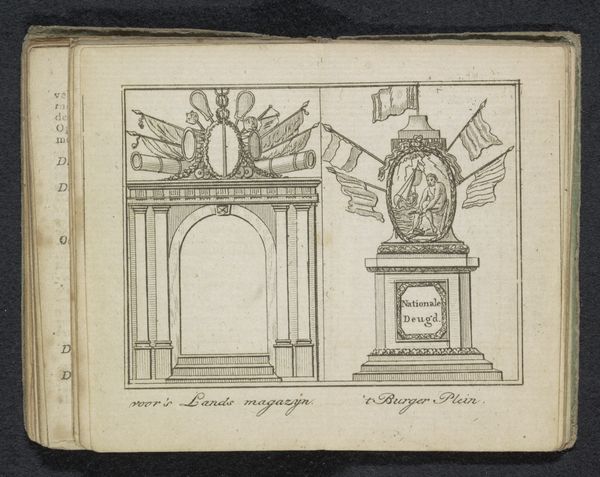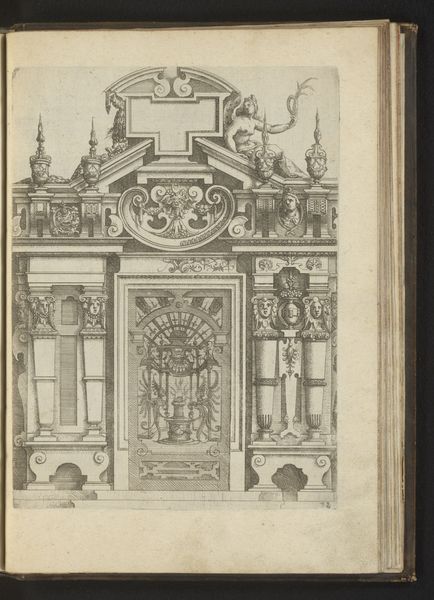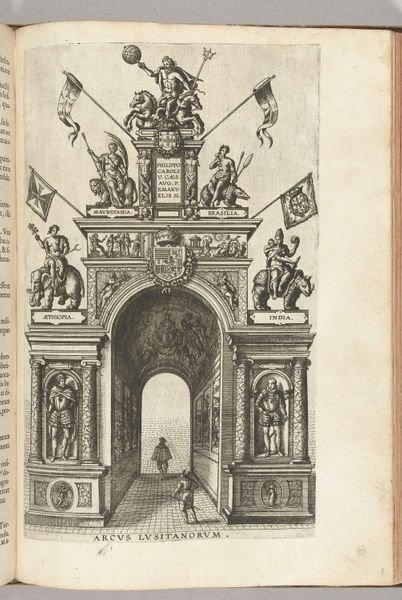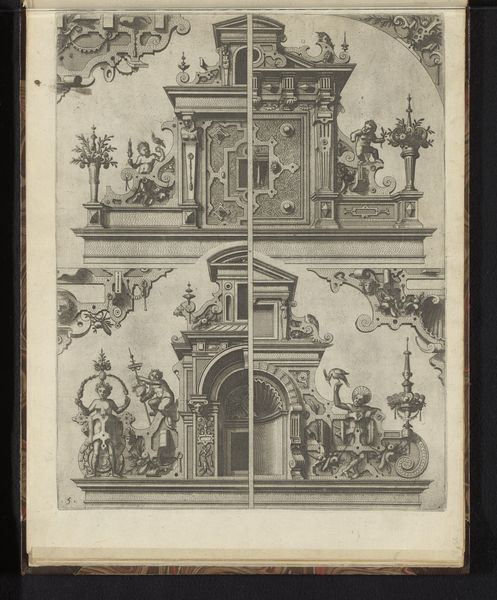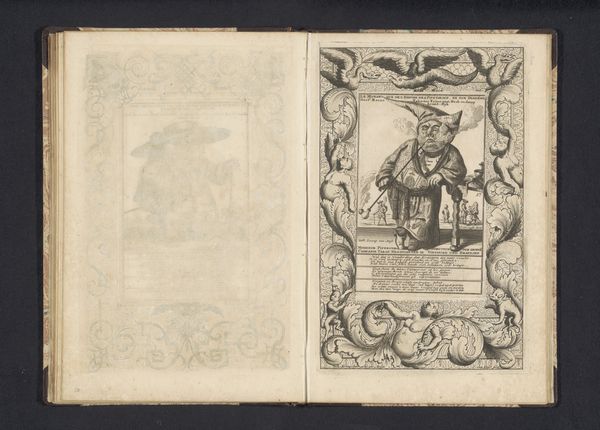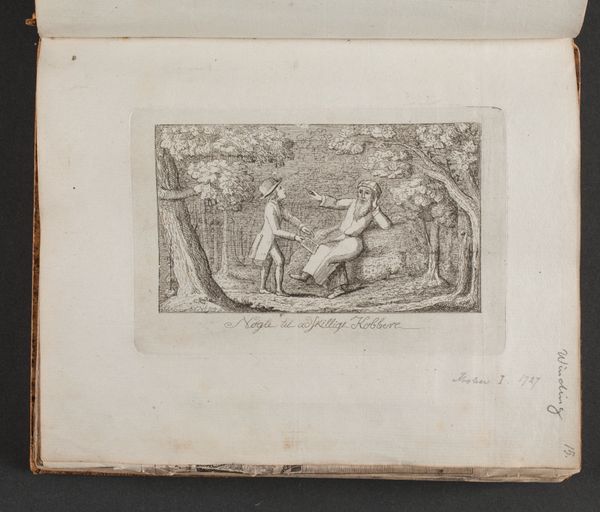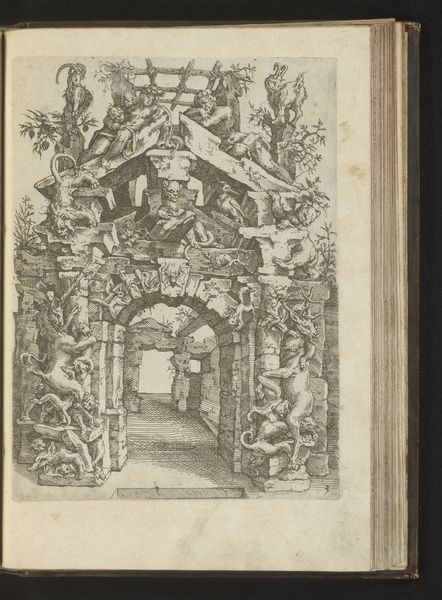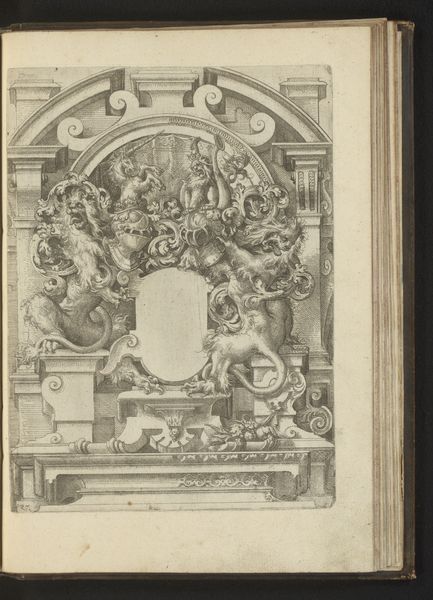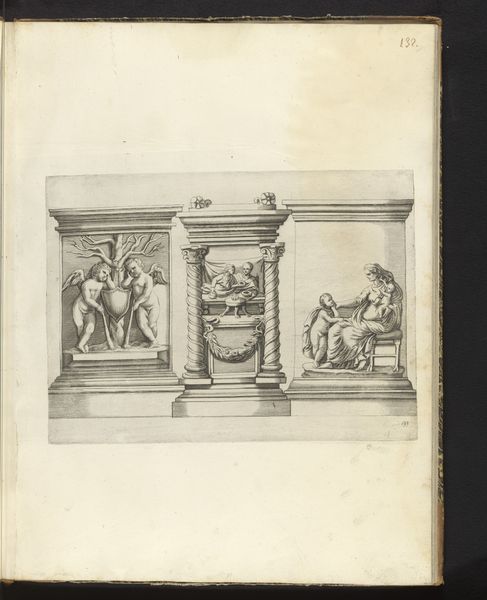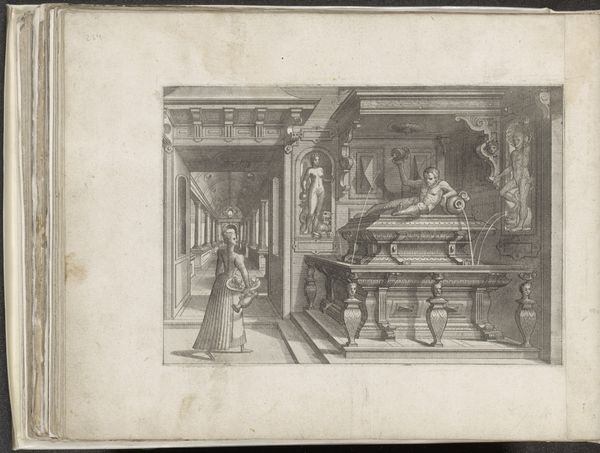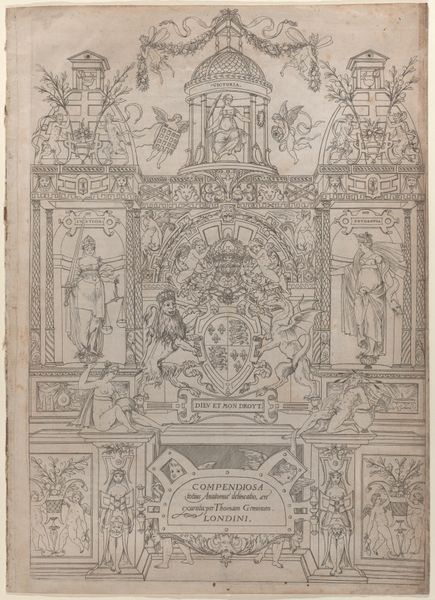
drawing, print, engraving
#
drawing
#
neoclacissism
# print
#
landscape
#
figuration
#
cityscape
#
history-painting
#
engraving
Dimensions: height 98 mm, width 116 mm
Copyright: Rijks Museum: Open Domain
Editor: This print, “Vernietiging der Aristocratie, decoratie op de Westermarkt, 1795” depicts a celebratory scene. I'm struck by the way classical motifs are used, almost like a stage set for this act of destruction. What story is being told through this combination of imagery and political statement? Curator: Indeed. It’s crucial to see this image as a product of its time. The French Revolution was sending shockwaves across Europe. Consider the central figure, wielding a club against the Hydra, a many-headed serpent. Who might the Hydra represent in this context? Editor: Given the title, I would guess the aristocracy. It’s a clear visual metaphor: a single hero destroying a multi-headed beast. But why frame this within Neoclassical architecture? Curator: Neoclassicism was often associated with Enlightenment ideals of reason, order, and civic virtue. The revolutionaries saw themselves as restoring these virtues, overthrowing what they viewed as the corruption and decadence of the aristocracy. Are those virtues accessible to all, though, if violence is at the core? What do you notice about who is *not* pictured? Editor: That's a powerful point. It seems the general populace isn't represented at all; perhaps only the enlightened revolutionary leadership matters. There's also an idealized male nude which further obscures the representation of ordinary women's contributions and lived experiences. It seems like a very carefully constructed image. Curator: Precisely. Think about how this image functions as propaganda. It uses familiar visual language, the Neoclassical style, to legitimize a radical political act, all the while erasing marginalized identities. Who is benefitting, and whose stories are left untold? Editor: I see what you mean. Looking closer, I see a tension between the seemingly noble visual language and the violent act it depicts. Thanks for making me see how artistic choices and revolutionary fervor can play into power dynamics. Curator: And how understanding those choices helps us critique not just the past, but the power structures present in our world today.
Comments
No comments
Be the first to comment and join the conversation on the ultimate creative platform.
